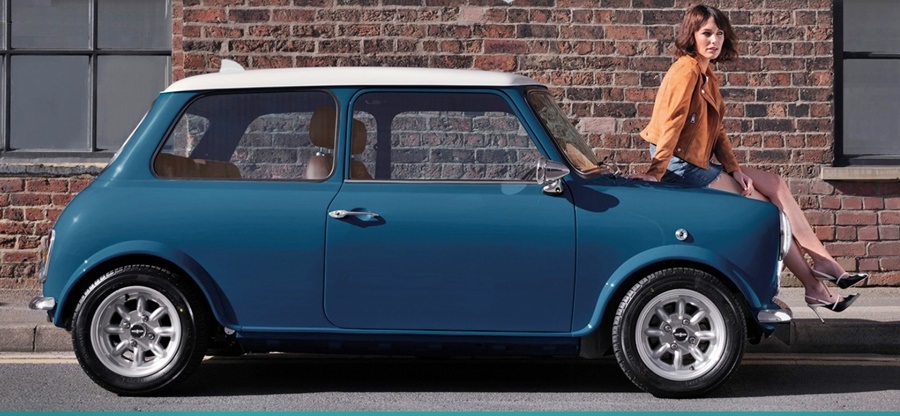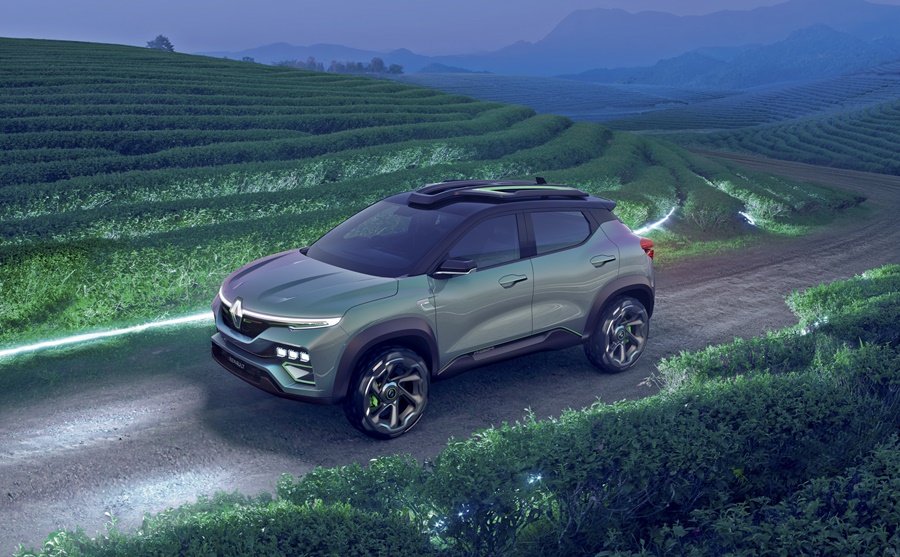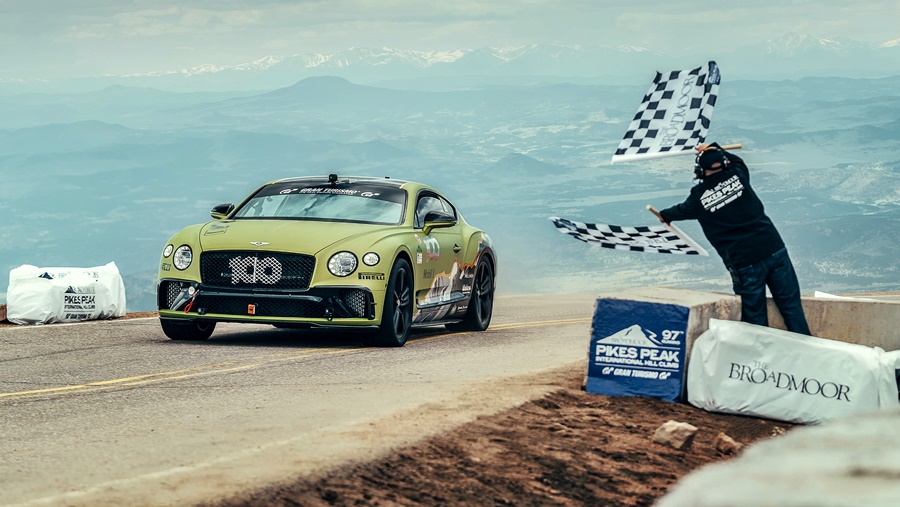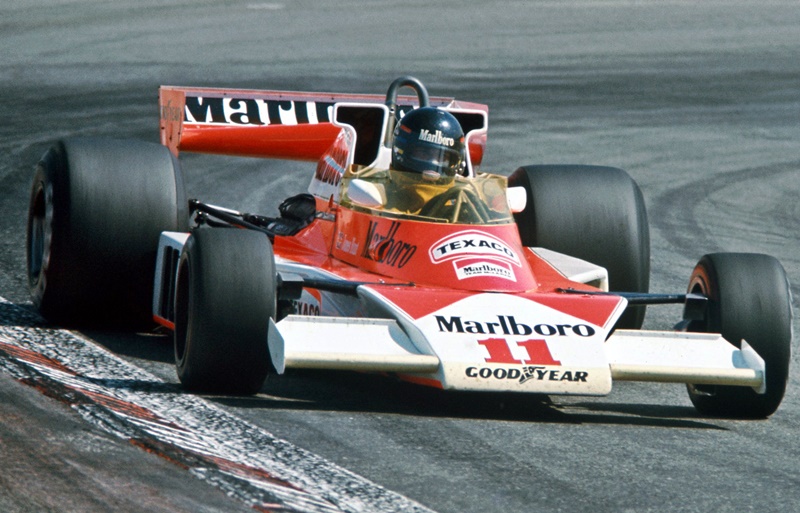David Brown Automotive (DBA) started off in 2013 to offer exclusive cars that took the classic, timeless, elegant looks of previous decades combined with modern, state-of-the-art engineering, production methods, technology and performance. Using predominantly British-sourced premium materials and traditional artisan craftsmanship, each of the company’s vehicles is uniquely produced by hand in Great Britain.
It recently completed a striking Speedback GT for a customer in Germany. Described as ‘a true example of personal expression’, the grand tourer showcases of DBA’s ability to offer bespoke solutions for any style, with this car custom-built with a number of exclusive accessories and bespoke options. Every customer obviously pays considerably more than the base price which, in the UK, is over £600,000 (about RM3.3 million).
This particular Speedback GT model has a bespoke brilliant ‘Blue Moon’ hand-painted finish. It is the mainstay of the company’s range of products and took some 8,000 hours to build. This latest Speedback GT order was entirely bespoke, with a completely unique combination of handcrafted leathers, wood veneers, bespoke brightware plating and unique picnic seat feature.
Every Speedback GT is a unique masterpiece, with this newest car distinguished not only by its blue hue but also with its bespoke build extras. A black mesh satin grille is fitted, complete with inset auxiliary LED lighting.
The car is fitted with 19-inch polished stainless steel wire wheels for use in the summer, surrounded by David Brown-branded tyres, developed specially for this wheel option by Avon Tyres. The owner also receives a set of bespoke Union Flag-inspired alloy wheels for the winter months.
Inside the Speedback GT, the car has a one-of-a-kind look and feel with hand-crafted Elm Burr satin lacquered wood veneers and a ‘Tabak’ tan leather interior that gives light colour shades to complement the tint of the extensive wood materials used throughout. All of the brightware has been milled from solid billets of aluminium and then plated in nickel chrome to give additional warmth to the cabin.
DBA is especially proud of the custom drinks set that holds the owner’s preferred gin and tonic and two crystal highball glasses, along with a bespoke woollen picnic blanket, situated underneath the picnic seat that extends out of the boot of the car, a feature made famous by Speedback GT.
This bespoke addition can be specially designed for customers who want to serve passengers drinks, or to park up for the night and enjoy a G&T. This customer spent a day at DBA’s headquarters to refine their bespoke specification, settling on the drinks set as a ‘quintessentially British’ signature of the car.
“We’re very proud of our entire product range and while much of our volume comes from Mini Remastered models, enquiries and sales of Speedback GT have remained consistent since its launch. Thanks to its timeless styling and superb build quality, the model remains a mainstay of our portfolio,” said Michelle Gay, Sales and Marketing Director at David Brown Automotive.


In spite of the hugely challenging conditions last year, Renault continued to improve its business in India, giving it confidence to accelerate expansion plans and double our annual sales volumes over the next couple of years. The market has remained strong in the French carmaker’s Africa-Middle-East-India-Pacific market, accounting for about 20% of sales.
The push forward today gained an additional offering for the Renault range for the sub-continent with the unveiling of the new Kiger SUV. The concept model was shown late last year and the production version looks very similar; in fact, Renault already said that around 80% of what was in the concept would be retained in the production model.

Follows concept model styling
The designers have given the Kiger several features to add sportiness. The front grille’s 3D graphic finish with honeycomb-shaped chromed effects is an example, while the aluminium finish skidplate is a highlight at the rear, along with the LED double C-shaped lighting signature.
The Kiger that will be in showrooms in India has the same overall silhouette of the concept SUV. It has an overall length of 3991 mm and overall width of 1750 mm and sits on the same CMFA+ platform as the Triber and the Nissan Magnite.
Best-in-segment roominess
The Kiger is said to provide ‘record levels of roominess’ and a couple distance of 710 mm between the front seats – the best in its segment. At the rear, there is also claimed to be the best-in-segment second row legroom and elbow room. Cargo volume is also the biggest in class with 405 litres (expandable to 879 litres) with a floor length of up to 1565 mm.
The ‘smart cockpit’ was designed to give a practical onboard experience without detracting from style. It has a high, wide dashboard centre console focused around a large 8-inch floating touchscreen that features wireless smart phone replication for Apple CarPlay and Android Auto.
1-litre engine, turbo and non-turbo
The powerplant available at launch is only a 1-litre 3-cylinder engine, with and without a turbocharging. The naturally-aspirated engine develops 72 ps/96 Nm while the turbocharged one has an output of 100 ps/160 Nm.
The more powerful engine will be available with a 5-speed manual transmission or X-TRONIC CVT. For the other variant, there is also a manual transmission or the option of an EASY-R robotised gearbox.
Pricing is expected to start from Rs 6 lakh (about RM34,000) with sales to start by the end of the first quarter of 2021.
The Continental model line has a special place in Bentley’s history, having begun in 1952 with the R-Type Continental. This was a Mulliner-bodied coupe with a top speed of just under 195 km/h. It was the fastest 4-seater car in the world during that period of the 1950s, and very quickly earned a reputation as the ultimate in high-speed luxury.
In 2003, the Continental GT was launched – the first car of the modern Bentley era. Inspired by the R-Type, the first Continental GT established an entirely new market segment – the modern luxury Grand Tourer. Ever since, an average of nearly 5,000 examples have been delivered to customers around the world each year.
This year, after 18 years, the Bentley factory in England produced the 80,000th Continental GT. It should be noted that every Continental GT has been customised, meaning there are 80,000 very individual examples of the car. The 80,000th unit was a right-hand drive Continental GT V8 in Orange Flame and it was completed earlier this week.
“At its launch in 2003, Bentley redefined the modern grand tourer with the revolutionary Continental GT. Now in 2021, the GT continues to be the ultimate luxury grand tourer, encompassing the latest technology, performance and style. This success is a testament to the skills of our designers, engineers and craftspeople here in Crewe,” said Bentley’s Chairman & CEO, Adrian Hallmark.
Many of the skilled craftspeople will have worked on the very first example of the Continental GT (still owned by Bentley). Over this period, the style, technology and engineering beneath the car has evolved significantly, seeing an increase of up to 27% in peak power, whilst models within the range have also achieved a reduction over the original Continental GT of 48% in CO2 emissions.
The platform beneath the car was upgraded to a Bentley design for the third generation, allowing a totally new stance, proportions and levels of dynamic ability that raised the bar again. Wrapped in a totally new bodywork design, with sharper lines and more flowing surfaces, the Continental GT remains a stylish and thoroughly contemporary grand tourer.
With a choice of powertrains, one of the most extensive colour palettes in the world and with almost limitless interior options, unique configurations can run into billions of variations. Bentley suggests that there are currently a total of 17 billion ways in which a customer can personalise his or her Continental GT.
Beyond that there are also the services of Bentley Mulliner – the company’s in-house bespoke division – which will make the requirements of each customer a reality. Apart from safety aspects, there are no limitations to what can be done for the customer.
To mark the production milestone, Bentley drew on its heritage fleet to show the evolution and achievements of the Continental GT since 2003. These included the very first production unit, still a taxed-and-tested car on Bentley’s fleet, a Continental Supersports coupe, considered by many to be the pinnacle of the first-generation GT family as well as second generation Continental GT V8 S coupe, finished in Jetstream.

The Continental GT has also supported Bentley’s long tradition of racing and record-breaking that started in the 1920s when the Bentley Boys set the pace at European circuits. Some recent achievements: the first Ice Speed Record GT, driven by 4-times World Rally Champion Juha Kankkunen; and the 2019 Pikes Peak GT, which still holds the Production Class record at the Pikes Peak International Hill Climb.
Only electric power for Bentley vehicles by the end of this decade
Air quality inside the car’s cabin never used to be an issue; after all, windows used to be down much of the time so fresh air could flow in and out. As air-conditioners became more common, windows stayed shut most of the time and this is when the air quality inside could become unhealthy. Fresh air ventilation modes have been available to allow outside air to enter, but many may not use it as it also means bringing in smells.
While smells and dust are unpleasant, the more serious issue in these times of COVID-19 is the need to ensure that the cabin air is hygienically clean. After all, we spend long periods inside the car and we obviously breathe constantly. Ensuring good air quality with maximum possible removal of germs is therefore a requirement today.
Proton, like many other carmakers, quickly began to look into how filtration systems could be enhanced to not just remove dust and other particles but also germs. Working with Geely, which has also been developing air filtration systems that can effectively remove germs from cabin air, Proton has developed cabin filters for its entire range of cars, including the latest X50.
The difference between Proton’s filters and most others – which typically trap dust and pollen – is that its filters have N95 capability. This means that they can remove 95% of particles and contaminants that are larger than 0.3µm (microns) and 98% of PM2.5 dust particulates. Removing PM2.5 particles is particularly important for respiratory health. PM2.5 particles are very tiny – about 3% the diameter of human hair – so it requires a very fine filter to stop them from entering the cabin. Apart from effectively filtering smoke particulates, dust and bacteria; the N95 filter can provide an allergy-free environment by reducing allergens from pets, aphids and pollen.
The P-IAPS in the X70
More interesting is the P-IAPS which is a superior air filtration system in the Proton X70. P-IAPS stands for PROTON Intelligent Air Purification System (P-IAPS) and it combines the benefits of an air purifier system and an N95 Cabin Filter. The IAPS uses a High Efficiency Particulate Air (HEPA) filter that removes up to 99.97% of particles larger than 0.3 microns while its activated carbon removes odours, formaldehyde and adsorbs and purifies smoke particulates.
Additionally, there is an ioniser which discharges negative ions to cleanse the air by ‘deactivating’ the viruses. The ionised air is often said to be like mountain air which is usually fresh and of course, clean.
N95 filter also available as replacement
The N95 Cabin Filter is now a standard item in all new Protons so the occupants are assured of clean, healthy air all the time. For those who already have the Saga, Persona, Iriz and Exora, it is also possible to replace the existing filters with N95 filters available at any authorised Proton service centre. It’s worth the extra investment, especially in these times when we must take greater precautions to protect ourselves from viruses in the air.
For more information on Proton’s products, services and accessories, visit www.proton.com.
Toyota, although a leading vehicle manufacturer, also gives attention to mobility and city planning challenges and issues. After all, its products are related in various ways, and helping to create a better environment for all is important.
This is being done through the Toyota Mobility foundation (TMF) which last year launched the CATCH – City Architecture for Tomorrow CHallenge – program involving Kuala Lumpur. Despite the continuing impact of COVID-19, the CATCH program progressed through the application stage in May, receiving over 90 entries from 20+ countries.
The Semi-Finalist stage concluded in last month, and with support and insights from strategic and data partners, the Semi-Finalists obtained an understanding of Kuala Lumpur’s mobility issues for their Proof of Concept (PoC) development over a 6-week period. An esteemed panel of 8 judges from various fields of expertise such as government, sustainable mobility, venture capital, technology, and industry virtually assessed the 16 Semi-Finalists.
TMF identified 6 teams as Finalists rather than five teams as originally planned. The following six teams are deemed to be best suited to CATCH’s problem statement and the five assessment criteria of creativity, feasibility, sustainability, desirability and technicality. These teams will be asked to further develop their MVPs and, at this stage, each will receive a grant of US$125,000 of financial support to drive testing and implementation of intelligent data-driven, connected solutions, aimed at a more efficient, innovative, secure and sustainable city of Kuala Lumpur.
“CATCH was designed to grasp groundbreaking innovations, and we were impressed by the ideas of 16 strong Semi Finalists who showcased new data driven mobility and city planning focused solutions. Though it was very difficult to narrow down the selection, as Toyota Mobility Foundation, we are very excited about the six Finalists and what they can deliver in the Minimum Viable Product stage to improve the quality of life of the residents of Kuala Lumpur,” said Pras Ganesh, Director of Programs of TMF.
TMF will continue to work together with strategic partners including DBKL (Kuala Lumpur City Hall), the Malaysia Digital Economy Corporation (MDEC) and its data partners – Prasarana, MapIT, and Grab – to support the finalists until the selection of a final winner in April-May 2021. This support includes the financial grant by TMF and incubation and mentorship provided by experts and judges supporting this CATCH program.
“Kuala Lumpur City Hall is looking forward to a practical and workable solution to be implemented to ease congestion and disperse traffic more effectively,” said Yu Chuan Hock, DBKL’s Director of Urban Transportation.
TMF hopes to utilize the insights gained through this challenge to solve mobility issues in other regions and countries in the future.
The Toyota Mobility Foundation was established in August 2014 to support the development of a more mobile society. The Foundation aims to support strong and equitable mobility systems. It utilizes Toyota’s expertise in technology, safety, and the environment, working in partnership with universities, government, non-profit organizations, research institutions and other organizations to address mobility issues around the world.
Toyota to build a prototype city of the future in Japan! (w/VIDEO)
“There’s no replacement for displacement’ used to be the belief in the auto world, especially among enthusiasts as well as those who sold or used commercial vehicles. Back in the days before turbocharging was widely used, getting more power from an engine meant making it bigger. A larger displacement allowed more air and more fuel in the combustion chamber, generating more power upon combustion.
That approach remained for decades, especially in America where fuel was cheap and drivers liked lots of power and torque. For the commercial vehicle sector, big engines were a must (and still are), for the high output needed to haul heavy loads. The higher compression ratios possible, resulting in higher pressures, produce more torque. And the more torque available, the better when it comes to carrying and moving heavy loads.
However, since the beginning of this century, environmental concerns have required manufacturers to address issues of fuel consumption and exhaust emissions. For petrol engines, downsizing has been a popular approach, coupled with technologies like direct injection and turbocharging which have even boosted output while making engines smaller (in displacement as well as size) and lighter.
For diesel engines, the initial solution was the introduction of commonrail fuel delivery system along with more advanced turbocharging. However, displacement remained big as there was still the matter of ‘no replacement for displacement’. While commonrail systems have raised outputs and made diesel engines more refined, large displacements have still be maintained which needed to be addressed.
Drawing on its very long experience specializing in diesel engines and developing them, Isuzu Motors naturally took on the challenge of developing a new generation of engines that would be in tune with the demands of the 21st century. Having developed a very wide range of engines with displacements of even more than 15 litres, Isuzu’s engineers had the knowledge and skills for the mission.
While the need to downsize the engines in the bigger commercial vehicles was not so urgent, there was a need to do so for the smaller range of engines used in pick-up trucks like the popular D-MAX. With pick-ups becoming increasingly used as an alternative to passenger cars for daily transportation, customers wanted more economical and efficient engines but still with the useful characteristics of the conventional turbodiesel engines.
The optimum size for today
Besides Isuzu’s original analytical technology of diesel combustion, extensive research and simulations identified 1.9 litres as the optimum size for the 4-cylinder configuration common in pick-up trucks. This was the starting point for the all-new engine which would come to be designated ‘RZ4E’. Three clear objectives were pursued: a) Best-in-Class fuel consumption; b) High reliability for long life; and c) Low noise levels. Straightforward objectives but challenging to meet and the engineers drew on new technologies to achieve them.
Downsizing the displacement would immediately result in lower weight, which is always a goal of engineers. Reducing internal friction – by as much as 37% – was also an important objective as less friction can improve power output. Computer-aided design of the pistons and combustion chambers also improved efficiency.
Along with optimised structural engineering and the use of better materials, the overall result was an engine that was not only more efficient but also surpassed the performance levels of bigger engines.
Less displacement but more output!
Compared to the 2.5-litre engine of the 4J series popularly used in the D-MAX before, the new RZ4E engine produces 110 kW of power at 3,600 rpm and 350 Nm of torque between 1,800 rpm and 2,600 rpm. These represent increases of 10% in power and 9.4% in torque – with a displacement that is 14% less. Notably, the improvement has not taken away the desirable characteristic of a diesel engine which is its flat torque curve.
Reliability is an important thing for Isuzu and is one of the reasons why its pick-up trucks are popular. Those who are in the commercial vehicle sector appreciate reliability and durability as they cannot afford to have a vehicle in the workshop frequently for repairs. The same also generally applies to any vehicle owner as everyone wants to enjoy using their vehicle as much as possible, and to keep cost of ownership low.
More reliable and durable
To improve the reliability aspects, the engineers installed Hydraulic Lash Adjusters (HLA) which automatically ensure that the valve lifters are always correctly adjusted. Likewise, the use of a serpentine belt also keeps the fanbelt correctly tensioned at all times. Incidentally, the timing chain is of steel for a long service life, another strong point of Isuzu engines.
Having a more advanced engine with higher output and higher efficiency would be wasted if that extra output could not be utilized fully. To ensure this, the engineers also developed a better transmission system with a new 6-speed manual transmission as well. The aim was to provide smoother and stronger takeoffs, especially on slopes, and this led to the development of the Vehicle Launch Assist Control. Basically, this feature manages engine output, raising torque levels at the time when the vehicle is starting off. The final gear ratio has also been revised to improve driveability and acceleration.
Tuned for Malaysian conditions
Isuzu sells its vehicles all over the world and different countries and regions have different regulations as well as fuel. To ensure that customers would be able to enjoy the maximum benefits of the new RZ4E engine, extensive testing is conducted before launch.
In the case of the Malaysian market, much of the testing focused on performance in high altitude areas and tuning the engine to run optimally on the lower quality fuel which today is Euro 2 B20 biodiesel. The studies led to the installation of a pre-fuel filter to ensure fuel cleanliness.
The attention to ensuring that the engine could meet all the conditions of the Malaysian market ensured that it could be introduced with confidence. Isuzu Malaysia would lead the market in bringing an innovative engine to Malaysian customers as no other manufacturer has offered a downsized turbodiesel engine with no compromise in performance and capabilities.
Certainly, it destroys the perception that there is ‘no replacement for displacement’! And where fuel efficiency is concerned, the D-MAX with the RZ4E engine is the first pick-up truck in Malaysia to qualify as an Energy Efficient Vehicle (EEV).
Proven in the Isuzu Dura Challenge
The 2020 Isuzu Dura Challenge proved the engineering supremacy of the new RZ4E ‘Blue Power’ engine. Isuzu Malaysia loaded a 1.9-litre D-MAX to its maximum permissible capacity of a ton and took it over some of the highest accessible hills along the Titiwangsa Mountain Range in Peninsular Malaysia.
In total, the vehicle clocked over 1,000 kms, with two bars of fuel still remaining in the tank. More significantly, the D-MAX with the Blue Power turbodiesel engine never had any difficulty in the high altitudes, even with such a heavy load on board.
Since its launch, the superiority of the Isuzu engine has been recognized by awards such as the Carlist ‘Diesel Engine of the Year (2019 & 2020)’ and it would certainly have been influential in the D-MAX being selected as ‘Pick-up Truck of the Year 2020′ (DSF).
The best way to experience this is to take a test-drive of the latest Isuzu D-MAX, available at any authorized Isuzu dealership nationwide. To locate a dealership, visit www.isuzu.net.my.
McLaren Racing is considering participation in the all-electric ABB FIA Formula E World Championship for Season 9 which will take place in 2022/2023. This is when the championship’s Gen3 era begins, meaning that McLaren Racing will be invest only in a brand new Gen3 platform, rather than spend unnecessarily on development at the present time.
The Gen3 racing cars will be used from the 2022/23 season, bringing performance and efficiency advances including more powerful, lighter cars and faster charging as well as a set of technical and financial controls aimed at reinforcing the business case for Formula E’s ecosystem of teams and manufacturers.
McLaren Racing’s interest in Formula E is a validation of the series as the pinnacle of electric racing, both as a proving ground for the top racing teams in the world and as a test-bed for the next generation of electric vehicles.

Exclusive Gen2 battery supplier
McLaren Racing is one of the most successful operations in motorsport, enjoying a rich history of success in Formula 1 as well as IndyCar and Le Mans. McLaren Applied is Formula E’s exclusive Gen2 battery supplier under a 4-season contract which concludes at the end of the 2021/22 season, after which McLaren Racing will evaluate the potential to deepen its involvement as a one of the 12 competitors in the championship which began in 2014.
“We’ve been closely observing Formula E for some time and monitoring the series’ progress and future direction. The opportunity to take an option on an entry and the completion of the McLaren Applied supplier contract with the FIA at the end of Gen2, gives us the necessary time to decide if Formula E is right for McLaren as a future competition platform,” said Zak Brown, CEO of McLaren Racing.

In its first 6 seasons, Formula E crowned 5 different champions and celebrated 17 winners in 69 races. With more automotive manufacturers on the grid than any other motorsport, the ABB FIA Formula E World Championship is not only one of the most compelling racing series on the planet but also an unparalleled proving ground for race-to-road electric vehicle and sustainable mobility technologies.
Formula E Accelerate esports championship
This year, there will also be the Formula E Accelerate esports championship. Over 6 events, 24 rising stars from the world of motorsport and esports will compete against one another in a simulated racing experience using rFactor2 software. Blending the real and virtual worlds, each competitor will score Formula E Accelerate points for a real-life Formula E team. Everyone who participates in all 6 races will receive a share of a minimum prize pool of €100,000 (about RM493,000) with the overall winner earning a test drive in a Formula E Gen2 car.
There will be two additional virtual races, each featuring 12 real-life Formula E drivers, one per racing team, during Round 4 and the Grand Final of Formula E Accelerate. Points from these races will be added to the overall team standings. The first round starts on January 28 and the championship will run up till March 25 this year.
Jaguar Racing and Audi Sport to use new powertrains for Formula E Season 7

During major construction of infrastructure projects around the country, some of the work may cross highways and this may require adjustment to traffic movements for safety and reduction of inconvenience. This is the case on the North-South Expressway (also referred to as KL-Seremban Highway) between Sungai Besi Toll Plaza and the UPM Interchange in Selangor where the MRT Project is underway.
To facilitate the construction of a pedestrian overhead bridge, PLUS Malaysia Berhad (PLUS) is staggering contra-flow along the affected sector with temporary bound closure betweenKM307 and KM309.
This will be for 8 days from Monday, January 25 until Tuesday, February 2, 2021, from 10 pm until 5 am daily. However, the closures will be implemented in stages where only one bound closure will be implemented at one time.
All highway users are strongly advised to plan their journey using the PLUS App and check the latest traffic conditions via CCTV feeds or use the SOS button in the app to request for help from PLUSRonda team, if required. Do follow all the traffic signs and directions for personnel.
© Copyright – Piston.my 2024 Trademarks belong to their respective owners. All rights reserved